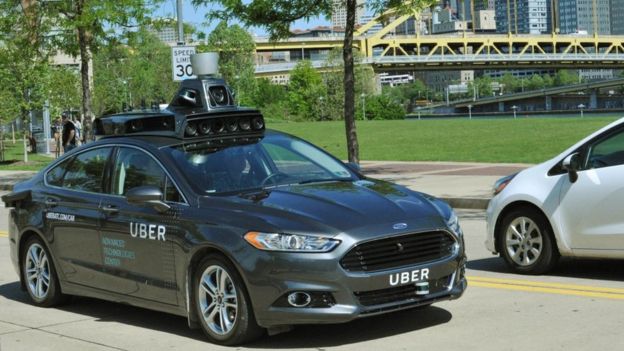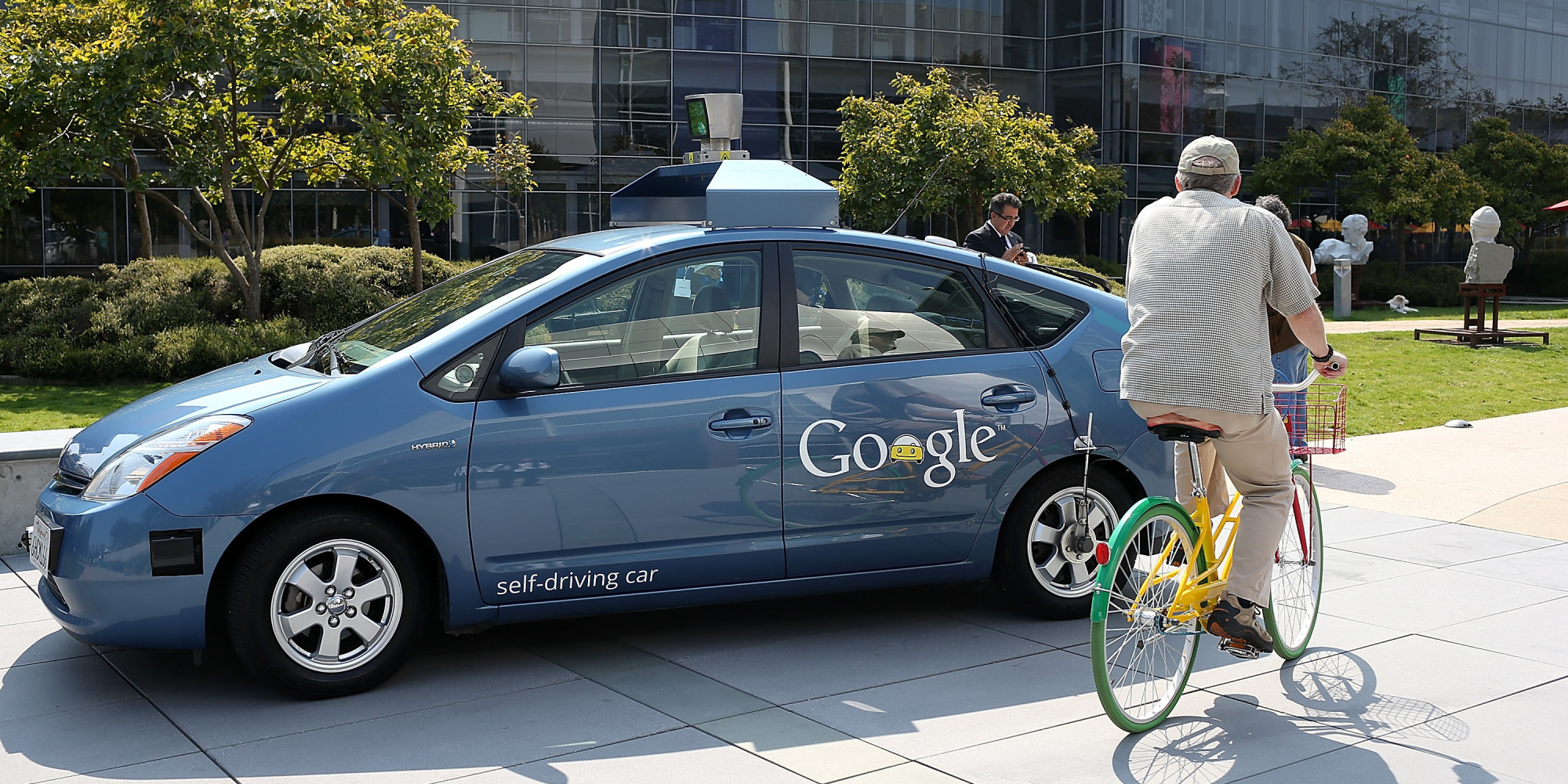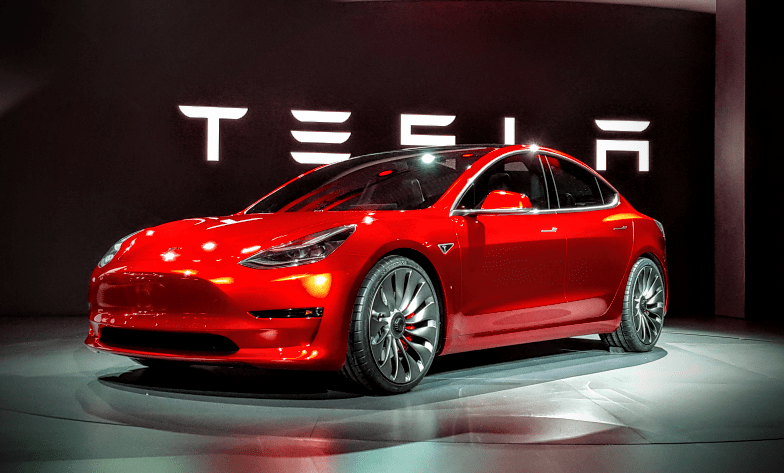Are Driverless Cars Coming To Kenya?
Posted on 2017-05-31
Imagine walking on the streets and a motor car carrying passengers but without a driver at the wheel whizzes past and parks perfectly a few meters away for the occupants to alight.
This may seem like an scene from a Sci-Fi movie but it is no longer far away from reality on our planet. This is a scene that will be quite commonplace in a couple of years in some parts of the world thanks to the rapid growth in driverless/autonomous/self-driving cars technology. Driverless cars present a great many benefits and opportunities majorly being increased road safety, over 80% of traffic accidents in Kenya are caused by human error. With driverless cars, car journeys can now become recreation times with no need for humans to control the vehicle, a drop in motor insurance premiums rates and much less emissions from efficient driving. Are these benefits that we could be enjoying in Kenya in the not so distant future?

Technology
The two biggest battle fronts in the technology world over the last 3-5 years have become Virtual Reality (VR) and Artificial Intelligence (AI), many of the big technology giants have slowly turned their attention after increasingly exciting breakthroughs by smaller companies and startups. AI in driverless motor cars is now the rage across technology and the automobile industry with different automobile bigwigs fighting to be the first to put a fully licensed and commercially ready autonomous vehicle on the market.
Some of the leading players in the race to the autonomous motor vehicle of tech include Tesla, Uber, Waymo, part of Alphabet the parent company to Google and YouTube. IPhone maker Apple has characteristically maintained silence on its plans for developing driverless cars, though betrayed by its recruitment of top automobile and AI researchers on the US West Coast. Most of the traditional automobile giants have also set up units to work on the technology while others have partnered with high performing startups to join the autonomous race.
Tesla
Tesla was one of the flag bearers in the autonomous vehicle race, having been seen as the biggest disruptor of the age old automobile industry with their all electric motor vehicle. In late 2015, CEO Elon Husk announced an Over The Air (OTA) software update for existing Tesla models essentially transforming them into semi autonomous vehicles. The software allows motor vehicles to change speeds, switch lanes taking care of most of driving requirements. Tesla now says they expect to have a car that drives in full autonomous mode from Los Angeles to New York before the end of 2017.
This is quite ambitious of the automobile company which has been producing electric cars given rival groups estimate to put a fully autonomous car on the road between 2019 and 2020.
The advancement of this technology and the move for different firms to put driverless cars on the roads has not been without its fair share of drama and especially in the last one year.
Despite being an early front runner in the autonomous race, Tesla came under great scrutiny after a driver died while using the company’s existing autopilot system on a Tesla S model in early 2016.
The Tesla S has since been cleared of any defects by the US auto safety regulator saying it found no cause to order a recall on the vehicles.
Musk has since announced that the autopilot system has received an upgrade with news reports saying that data shows Tesla’s vehicles crash rate dropped by almost 40 percent after Autosteer installation.
UBER
Uber has recently emerged as a strong contender in the autonomous vehicle race, buoyed by the global success of its ride hailing business. With a valuation of over USD 70 billion and multiple billion dollar funding rounds, Uber has aggressively developed and deployed test autonomous vehicles attracting run ins with legislators in several jurisdiction in the USA. It is dealing with a lawsuit and has been forced to suspend its fleet of driverless cars after a crash in Arizona involving one of its vehicles as investigations are carried.
Adding to its long list of PR setbacks, the firm is also dealing with a lawsuit from Waymo, Google’s self-driving car company. Waymo moved to court early 2017 seeking the court to block Uber from using technology they alleged was stolen from them. Waymo alleges that a former employee of the company, Anthony Levandowski planned to steal trade secrets before starting a new self-driving truck firm called Otto which Uber later acquired. The said technology that Waymo alleges was stolen is the LiDAR system, a technology that self-driving cars use to observe the road.
Uber has never publically admitted that it’s end goal is to develop an autonomous fleet of vehicles allowing it to get rid of its driver partners who currently pocket over 70% of the ride share company’s revenue from rides.

Kenya
So, given the current state of the technology and the drama surrounding the public commercial testing in the US, will these cars be on the Kenyan roads in the next ten years?
A lot of progress has already been made in countries where these autonomous vehicles are being tested on streets. They include legal and insurance matters with the United States having already introduced guidelines and safety assessment for driverless car testing. Although current regulation requires that a human be present in the autonomous car at all times, the California DMV is already proposing legislation changes that will allow these car companies to operate a fully autonomous vehicle with no human driver present. Car insurance is also facing a revolutionary shift with the cost moving to the car companies which forces them to carry liability for the risks that the vehicles pose to the public.
Bringing these autonomous cars will therefore require similar changes among more extensive structural and infrastructure changes. What remains to be seen is how long would that take given the public transport system in the country still remains quite hard to tame by the National Transport and Safety Authority (NTSA).
Given the nature of the technology, some of the US guidelines touch on where self-driving cars can operate, how fast they can be driven and who can control the vehicles. In addition, public sensitization would be a major part of any agenda to bring these vehicles on Kenyan roads, for all categories of road users to retrain and observe among other issues. The NTSA would face an untold opposition from the private sector especially owners and operators of Public Service Vehicles (PSV) which account for over 70% of transportation in Kenya. Key among these is the Matatu industry which has defined public transport in Kenya even garnering fame beyond our borders.
Secondly, it would remain to be seen how the Insurance Regulatory Authority (IRA) would navigate the insurance legislation shift required to accommodate these vehicles on Kenyan roads. What opposition would be raised by traditional insurance companies which enjoy car insurance premiums of over KSh 50 billion a year. Brokers, agents and bancassurance channels similarly would be faced with a significant loss in revenues from the motor vehicle insurance business.
These are all issues NTSA would have to deal with on top the chaos that is the Kenyan roads. But despite the challenges that bringing such cars could pose to the Kenyan safety authority, driverless cars come with their own advantages.
We would see less emissions because most of these cars would be electric and less accidents given the technology is looking to eliminate human error such as drunk driving.
In addition to the traffic and insurance regulation, introduction of autonomous cars on Kenyan roads would require a significant infrastructure upgrade and in parts overhaul from the Kenya National Highways Authority (KeNHA). KeNHA would need to ensure all their roads have the proper signage for lane markings, traffic diversions, highway exits, traffic lights, speed limits, stop signs, pedestrian signs, traffic lights among other signage in the highway code. Such would require a massive investment from the government, something that puts this technology farther away from our roads.
This is because these autonomous cars use a combination of video cameras, optic and acoustic sensors, geo mapping data and state traffic mapping to detect traffic lights, read road signs and keep track of other cars, pedestrians and other road users. With these major challenges far from being addressed in Kenya, autonomous cars remain far from hitting our roads in the next 10 years unless a radical change in investment, public policy and infrastructure can be realized.
Image Sources:
































